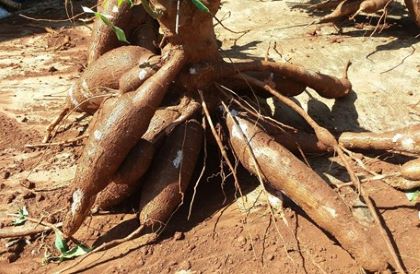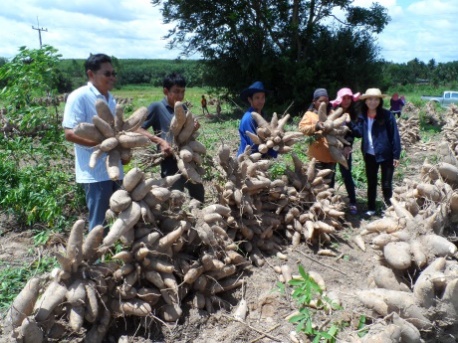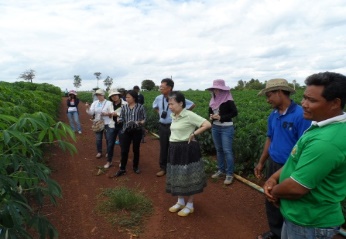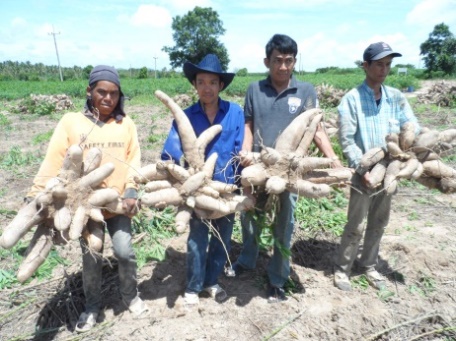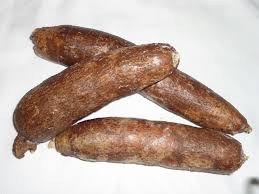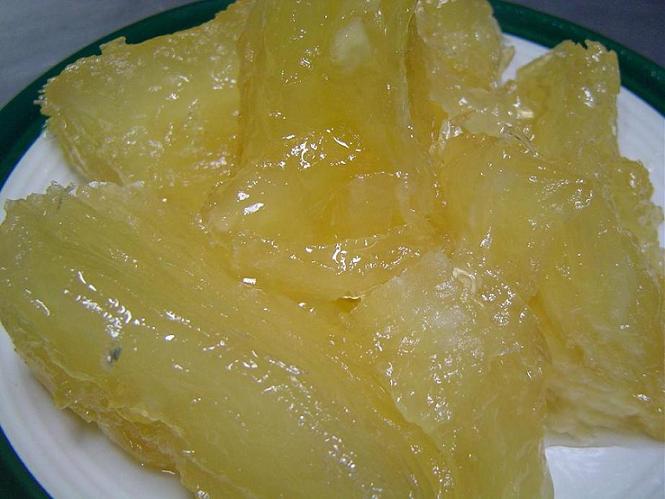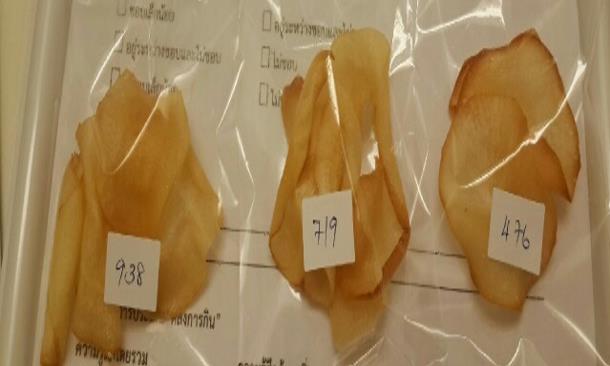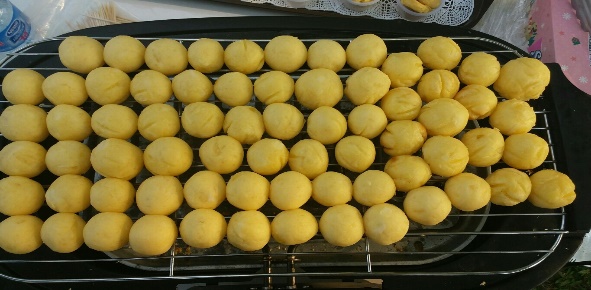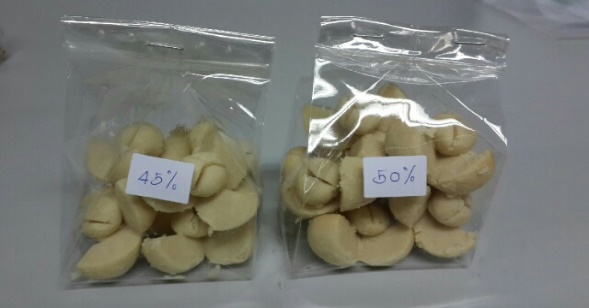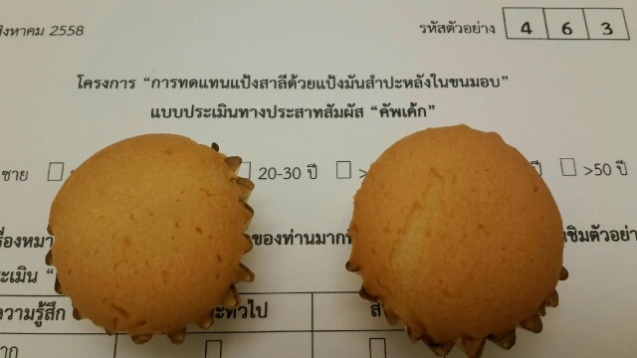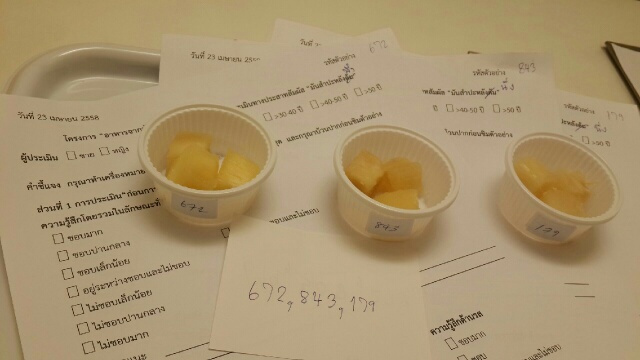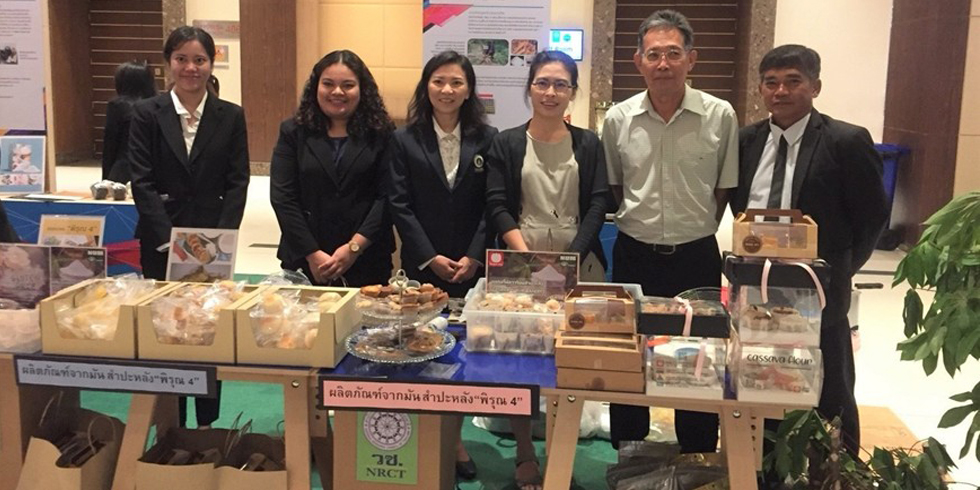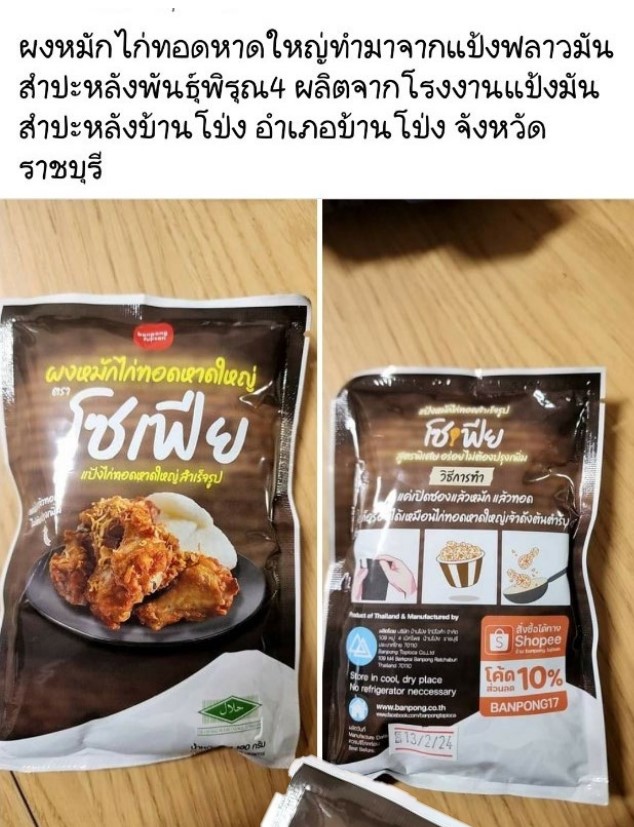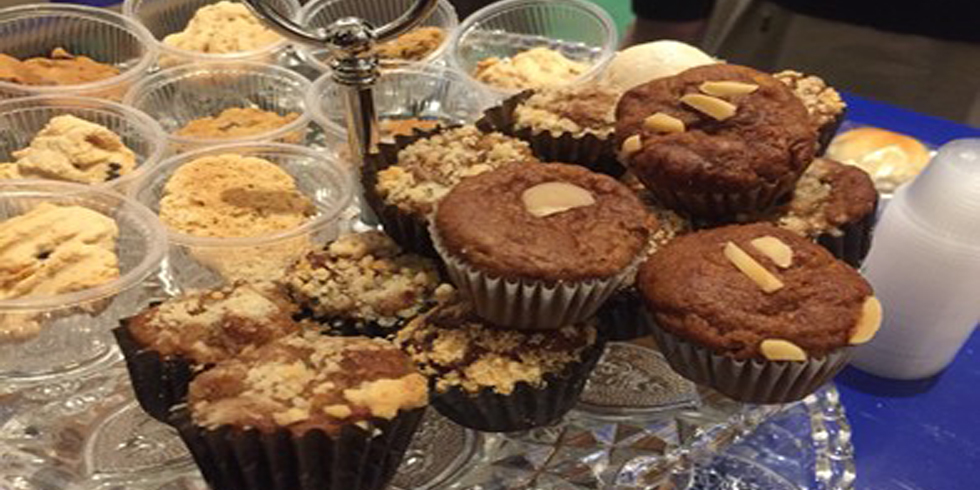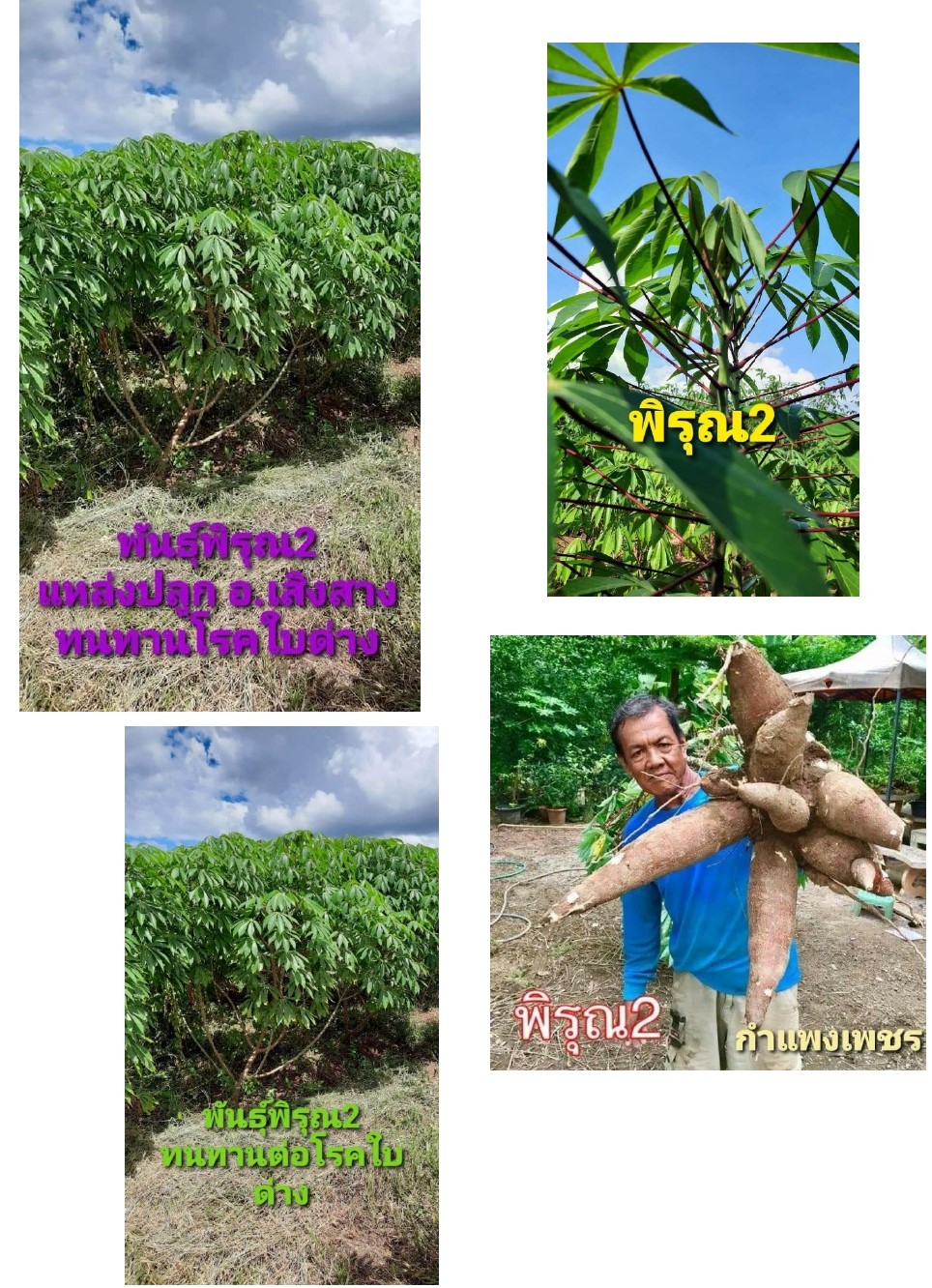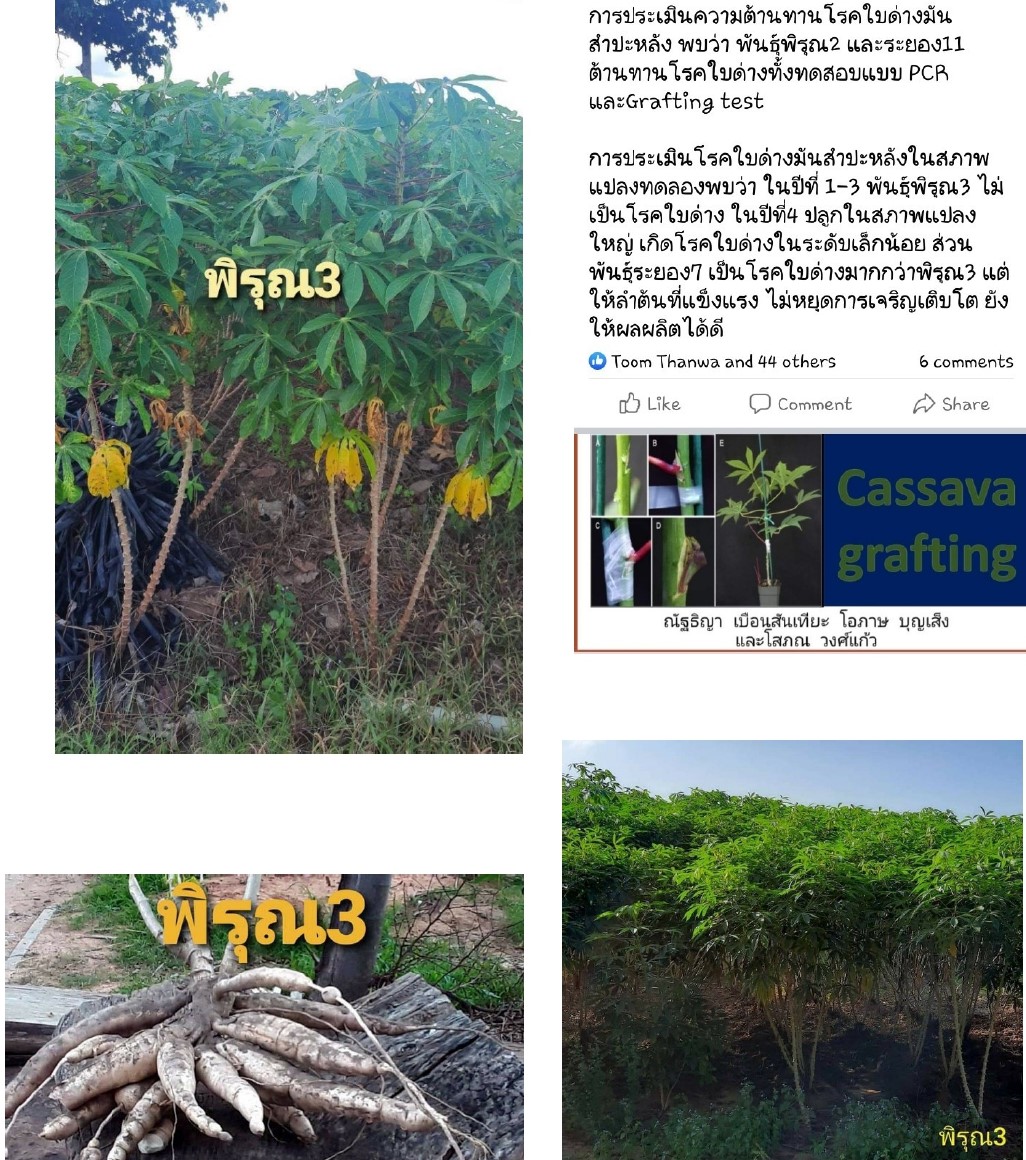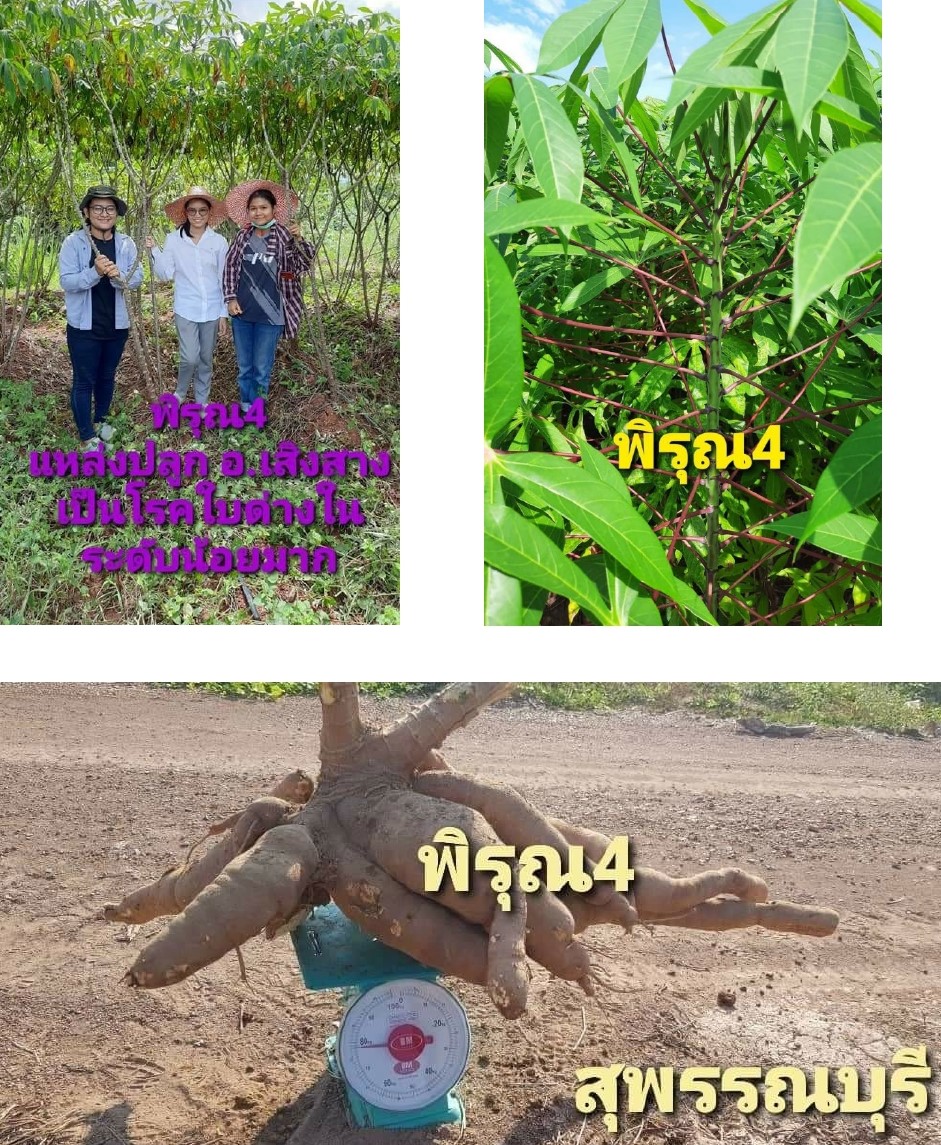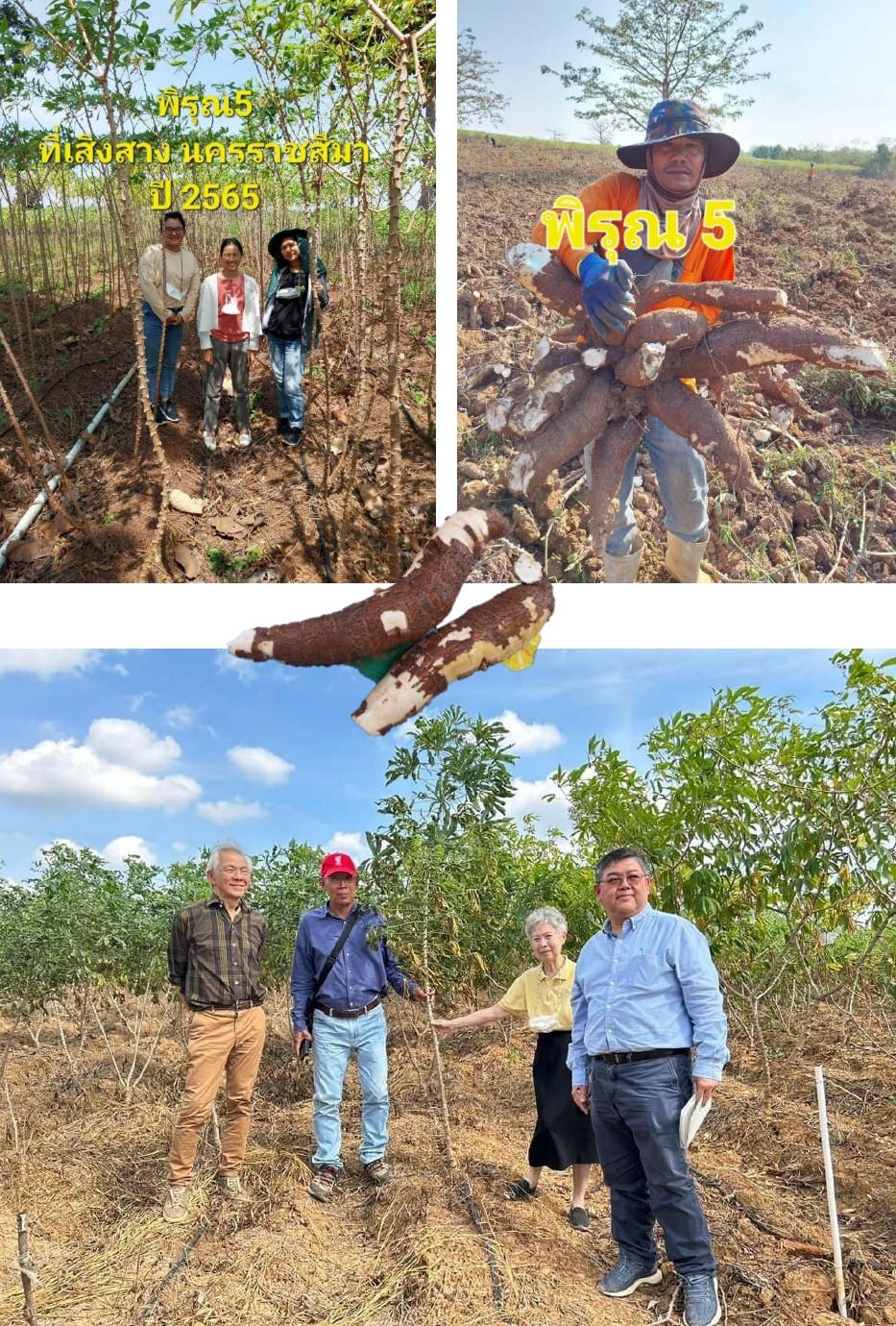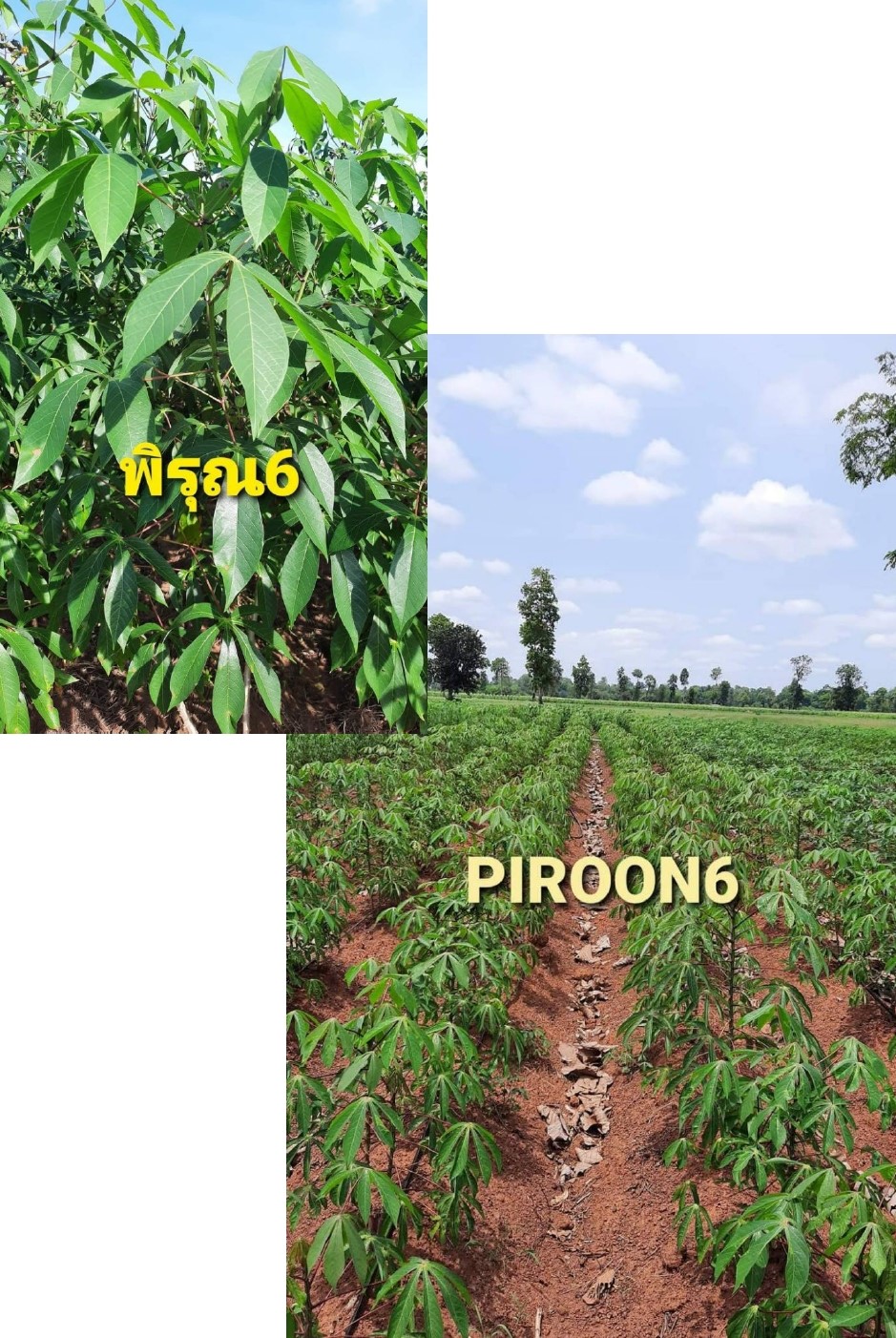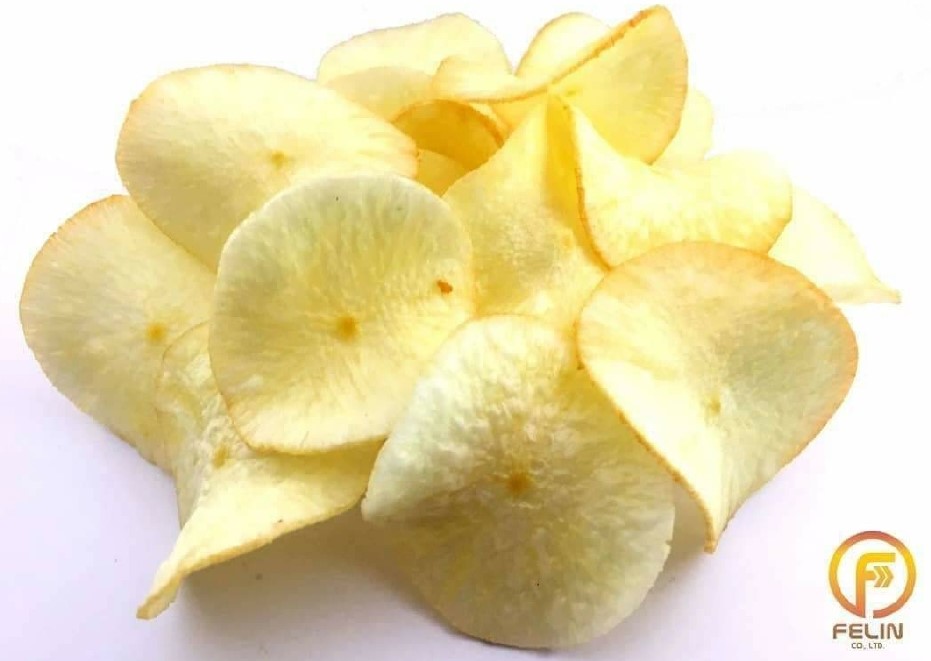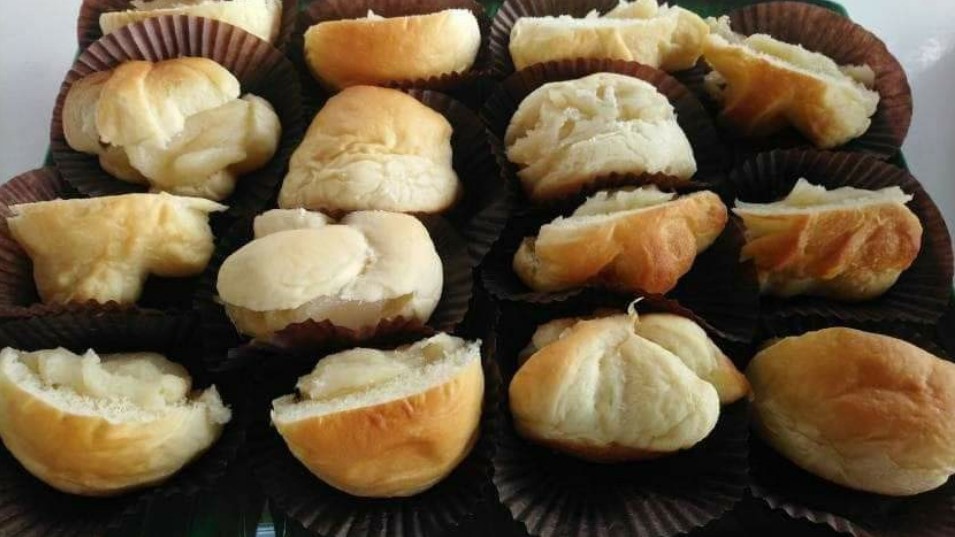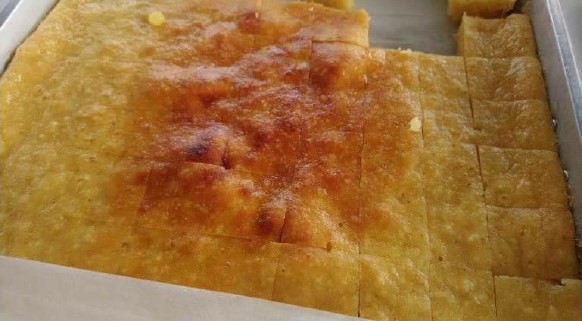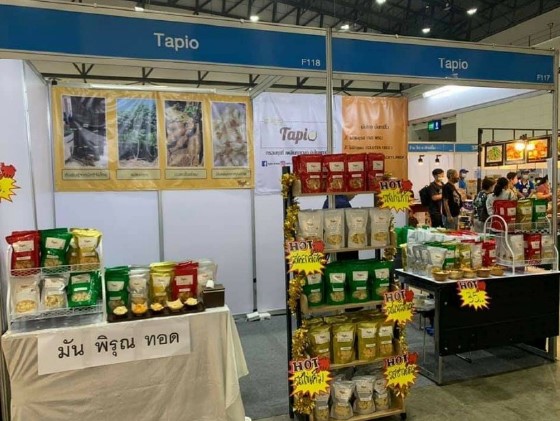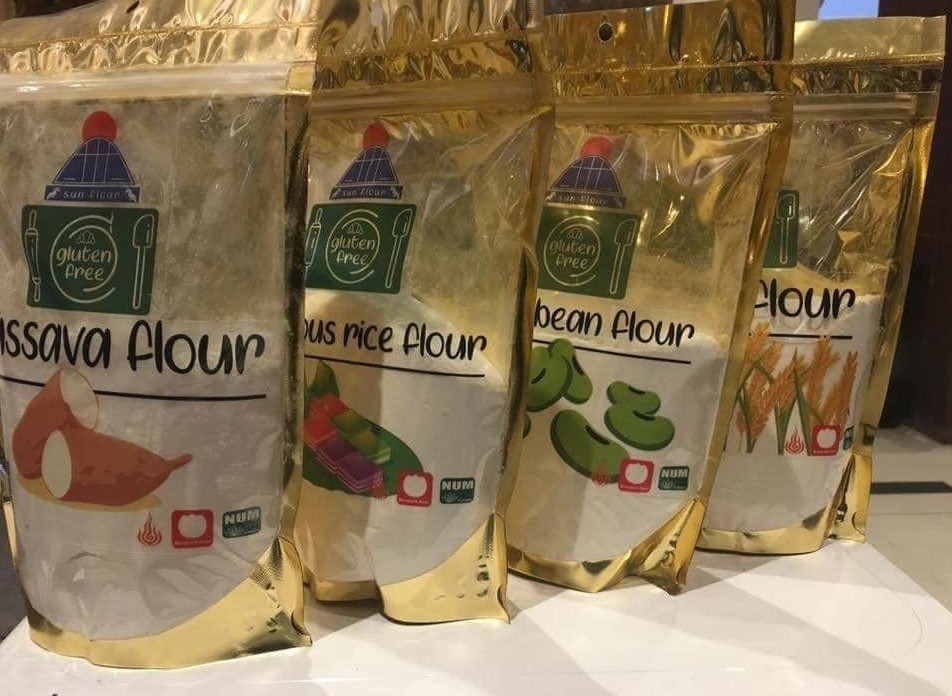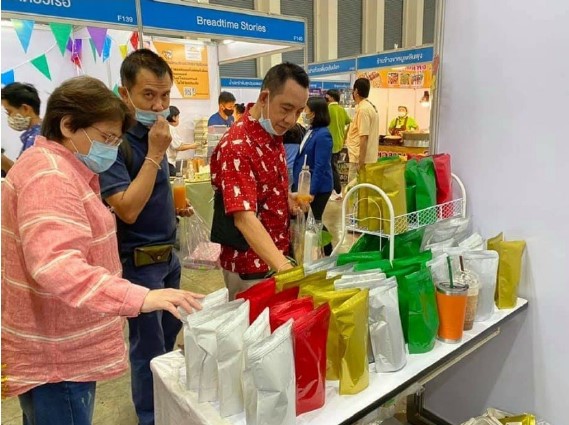Cassava is one of the most important economic crops in Thailand. The limited availability of cultivable lands and the increasing demand call for cassava varieties possessing high starch content and productivity. Piroon cassava have been developed to yield more than 5 tons per rai of fresh roots containing close to 30 percent starch content. Both varieties have been introduced for commercial farming in many areas, including Nakhon Ratchasima, Rayong, Roi Et, Maha Sarakham, Mukdahan, Lopburi, and Phetchabun. Piroon 2 cassava has been promoted for food processing such as sweetened cassava, French fries, seasoned crisps, grilled cassava ball, and mashed cassava. The variety was also recommended as a wheat flour substitute for Thai and Western bakery products like Kleeb Lamduan, cupcakes, and cookies
Development of Piroon cassava
Piroon cassava was developed from a reciprocal cross between Huay Bong 60 and Hanatee cassava. The mother plant, Huay Bong 60, has high starch content in fresh tubers, produces high yield with high cyanide content, and has slow growth rate in the early phase. The father plant, Hanatee, has low starch content in fresh tubers, produces low yield with low cyanide content, and has rapid growth rate in the early phase.
The cultivar's name "Piroon" means "The Angel's Plant" whose life relies on the "rainwater" or "Phra Phirun" the god of water. The name also reflects the hallmark of the variety: Piroon cassava can grow well even in rainfed crops. The cultivar possesses a beautiful canopy shape with overhead branching, red petioles, short stalks, and tubers with white flesh containing low cyanide. The advantages of using Huai Bong 60 and Hanatee as the parental pair have been the focus of the research and breeding program led by Assoc. Prof. Dr. Kanokporn Triwitayakorn, in cooperation with the Department of Agriculture (Dr. Opas Boonseng), the National Center for Genetic Engineering and Biotechnology (BIOTEC), and the National Science and Technology Development Agency (NSTDA) since 2006.
Some of the progenies from the cross have been used in the development of DNA markers, which will be used in future marker-assisted selection (MAS) breeding programs. Others were selected for trait evaluation and used in conventional breeding programs. For instance, the high-yield, high-starch, and disease-resistant Piroon 1 for industrial applications, the gluten-free Piroon 2 and Piroon 4 for consumer markets. The gluten-free cultivars are suitable for flour processing, serving as promising alternatives to wheat flour used in bakery goods and future health-conscious products.
To date, Piroon 4 cassava has generated income for farmers who supply the produce to factories and those who join force to form community enterprises. These communities have used Piroon 4 cassava in a variety of Thai desserts, including candied cassava, Khanom Tako, Kaeng Buat, Na Khanom Nuan dessert, and Khanom Ba Bin dessert. The cultivar has been used in bakery products such as brownies, cupcakes, cookies, and processed into fried cassava.
In the future, the research team foresees the opportunity to develop new cassava cultivars with increased yield, better taste, and improved nutritional values, especially those intended for consumer markets. Ultimately, the researchers plan to introduce future cultivars to farmer communities to ensure that their research will truly pay off.
-
https://www.nstda.or.th/nac/2018/seminar/83-seminar13mar/132-13pmsshwork2.htmlhttps://www.nstda.or.th/nac/2018/seminar/83-seminar13mar/132-13pmsshwork2.html➞
-
https://www.thairath.co.th/news/local/1287281https://www.thairath.co.th/news/local/1287281➞
-
https://www.nstda.or.th/agritec/pirun-different/https://www.nstda.or.th/agritec/pirun-different/➞
-
https://kas.siamkubota.co.th/knowledge/มันสำปะหลังพันธุ์ใหม่/https://kas.siamkubota.co.th/knowledge/มันสำปะหลังพันธุ์ใหม่/➞
-
https://www.ryt9.com/s/prg/3210542https://www.ryt9.com/s/prg/3210542➞
-
https://www.bangkokbiznews.com/tech/928928https://www.bangkokbiznews.com/tech/928928➞
- Farmers who grow cassava
- Researchers and Agronomists


